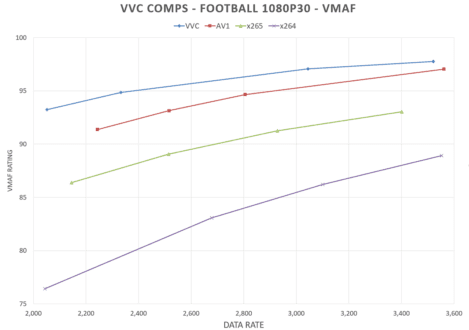This video discusses how to choose a codec in 2021 and beyond.
Download the handout here. Here’s the video.
Here’s the Description
Codecs like H.264 and AV1 are the key enabling technologies for all entertainment and business-oriented video distribution, whether movies distributed via Netflix or videoconferencing from Zoom and similar services.
At a high level, codecs come from two different sources; standards bodies like MPEG (MPEG-1, MPEG-2, H.264, HEVC, VVC, EVC, LCEVC) and from so-called open-source development (VP9, AV1). What does this mean regarding royalties and usage costs? And with so many codecs available, when will each become relevant for deployment, if ever?
Here are the contents with the time code.
00:00 – Introduction
01:18 – Agenda
02:44 – What codecs are and how they are created (with a quick primer on patent pools)
10:48 – The difference between a “hardware” codec and a “software” codec.
12:53 – Codec overview – H.264, VP9, HEVC, AV1
19:45 – New rules of codec adoption – the influence of the Alliance for Open Media 24:53 – The MPEG standards organization in 2020 26:10 – Versatile Video Coding (VVC)
30:23 – Essential Video Coding (EVC)
33:45 – Low Complexity Enhancement Video Coding (LCEVC)
36:27 – Analyzing quality (Rate Distortion Curves and BD-Rate Functions)
38:26 – Bjontegaard Functions
39:41 – Producing RD Curves and BD-Rate Functions
41:06 – The difference between academic and real-world codec trials. 44:30 – Computing real-world bandwidth savings
48:45 – VVC test results
52:34 – LCEVC test results
59:20 – Codec projections – Key codec functions (live contribution, live transcoding, low-latency, VOD, HDR) and codec availability within these sub-markets.
The webinar was designed for newbies who want to learn about codecs and experienced streaming professionals who want an update on codecs for 2021 and beyond. You’ll walk away knowing which codecs are likely to stay or become relevant to your business, what they will cost to deploy, and how to evaluate their utility.
 Streaming Learning Center Where Streaming Professionals Learn to Excel
Streaming Learning Center Where Streaming Professionals Learn to Excel









